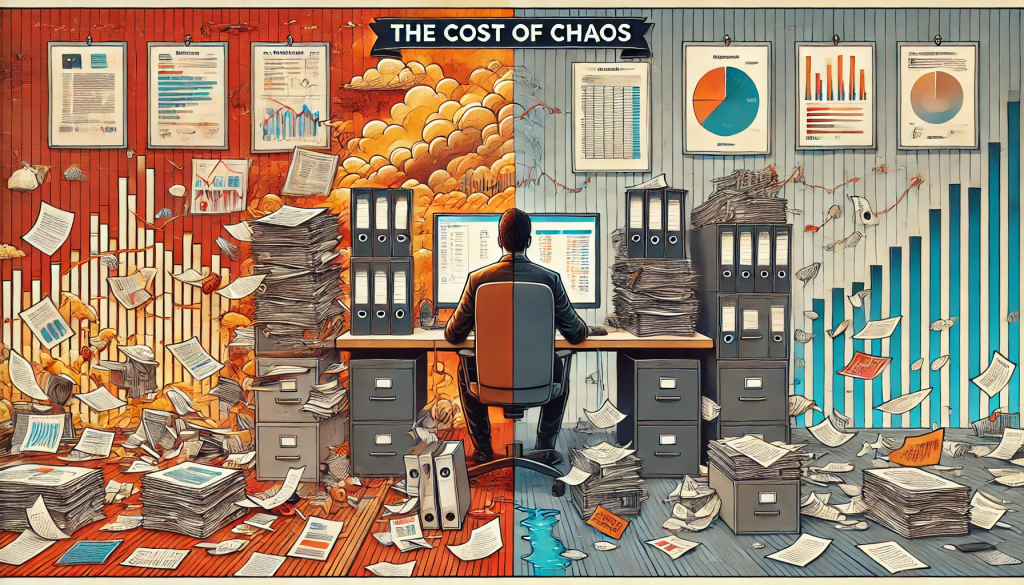After 30+ years in document management, I’ve witnessed firsthand how organizational chaos can silently sabotage even the most promising businesses. Like an undetected leak in your plumbing that gradually weakens your foundation, poor document management creates costly damage long before most leaders recognize the problem.
Think about your business documents as you might think about the circulatory system in your body. When everything flows properly, you hardly notice it’s there. But when blockages form or pathways get crossed, the entire system suffers—and sometimes catastrophically.
The Hidden Price Tag of Disorder
The costs of document chaos manifest in three critical ways:
Operational Inefficiencies: The average employee spends nearly 2 hours daily searching for information. That’s essentially paying a full-time employee to work just 3 days a week! When documents exist in multiple versions across various folders, drives, and inboxes, your team becomes archaeologists rather than producers—digging through digital layers hoping to unearth the correct file.
Legal Vulnerabilities: Like driving without insurance, operating without proper document controls is a risk you can’t afford to take. I’ve counseled businesses facing substantial penalties because they couldn’t produce required documentation during audits or litigation. Retention policies aren’t just bureaucratic red tape—they’re protective barriers against compliance nightmares.
Missed Opportunities: Perhaps most painful are the opportunities lost when institutional knowledge becomes inaccessible. Customer histories, project insights, and competitive intelligence all become buried treasures—valuable but unreachable—when document management falls apart.
The Transformation Opportunity
The good news? This problem is solvable. I’ve seen businesses transform their operations through structured document management strategies. It’s like watching someone who’s always lived in a cluttered home experience the freedom of organized spaces for the first time—suddenly they can breathe, think, and move with newfound efficiency.
Effective document management isn’t about perfection—it’s about creating systems that match how your business actually works. Just as a skilled gardener designs pathways where people naturally walk, good document systems follow your team’s workflow rather than forcing artificial processes.
The businesses that thrive understand that document management isn’t an IT function or administrative burden—it’s a strategic advantage that preserves institutional memory, accelerates decision-making, and protects valuable assets.
After helping hundreds of organizations tame their document chaos, I can tell you with certainty: the cost of chaos is too high, but the return on organization is immeasurable.

